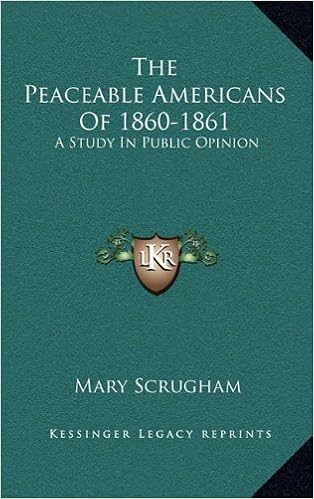
The references to the preservation of the union and the rights of the States in the Republican platform condoned the nullification of the northern States and at the same time condemned that of the southern States.
The cause of the War Between the States was the Republican Party. This party fielded its first purely sectional presidential candidate in 1856, and only five years later elected, with a bare plurality, such an objectionable president as to drive several States to independence. After launching total war against the States desiring independence, and in the face of dwindling enlistments to fight his war, Lincoln resorted to William Seward’s view of the South’s internal vulnerability. Lincoln’s proclamation mimicked Lord Dunmore’s in 1775, and Vice-Admiral Sir Alexander Cochrane’s in 1814, and for the same purpose: to emancipate slaves and to enslave free men.Bernhard Thuersam, www.Circa1865.org The Great American Political Divide
The Gist of the Matter
“Given secession as a fact, the gist of the matter was then: “Were the northern people willing either to sacrifice the union or to engage in civil war (accepting force as an essential principle of government for the South), for the sake of making a declaration in favor of freedom in the Territories where freedom was to exist anyway by the law of nature?”
Thus, the northern people were called upon to consider not only whether they were in favor of a declaration of freedom for the Territories, but also, to decide how badly they wanted to make such a declaration.
The Republican platform contained a “rotten plank” on the main point at issue, namely, what the party would do in case of secession. This plank consisted in a quotation from the Declaration of Independence in regard to the inalienable rights of man, and to a government’s deriving its just power from the consent of the governed.
This quotation was incorporated to gain the allegiance of the abolitionists whom Lincoln had held out hopes to in the House-Divided speech and whom Seward had catered to in his “Irrepressible Conflict” oration. It was understood to have reference to including the Negroes within the scope of the liberty mentioned among the inalienable rights of man.
Furthermore, the “rotten” planks use of the words of Andrew Jackson in regard to the preservation of the union of the States . . . [suggested] the words “must and shall be preserved” in regard to the union of the States when South Carolina nullified the federal tariff law of 1832.
It so happened in 1860, a number of northern States had acts on their stature books, nullifying the federal fugitive slave law. Nullification and secession were both rights of a State according to the States’ Rights School of statesmen.
The references to the preservation of the union and the rights of the States in the Republican platform condoned the nullification of the northern States and at the same time condemned that of the southern States.
The Republican leaders sought to convince the northern voters that there would be no just cause for secession in the event of the election of a sectional president: that the Southern leaders were only bluffing and were trying to intimidate the northern voter into voting against the dictates of his conscience.
Seward, the author of the “Irrepressible Conflict” oration, explained that the South would never in a moment of resentment expose themselves to war with the North while they have such a great domestic population of slaves ready to embrace any opportunity to assert their freedom and inflict revenge.”
(The Peaceable Americans of 1860-1861: A Study in Public Opinion, Mary Scrugham, Columbia University Press, 1921, excerpts pp. 42-45)

No comments:
Post a Comment